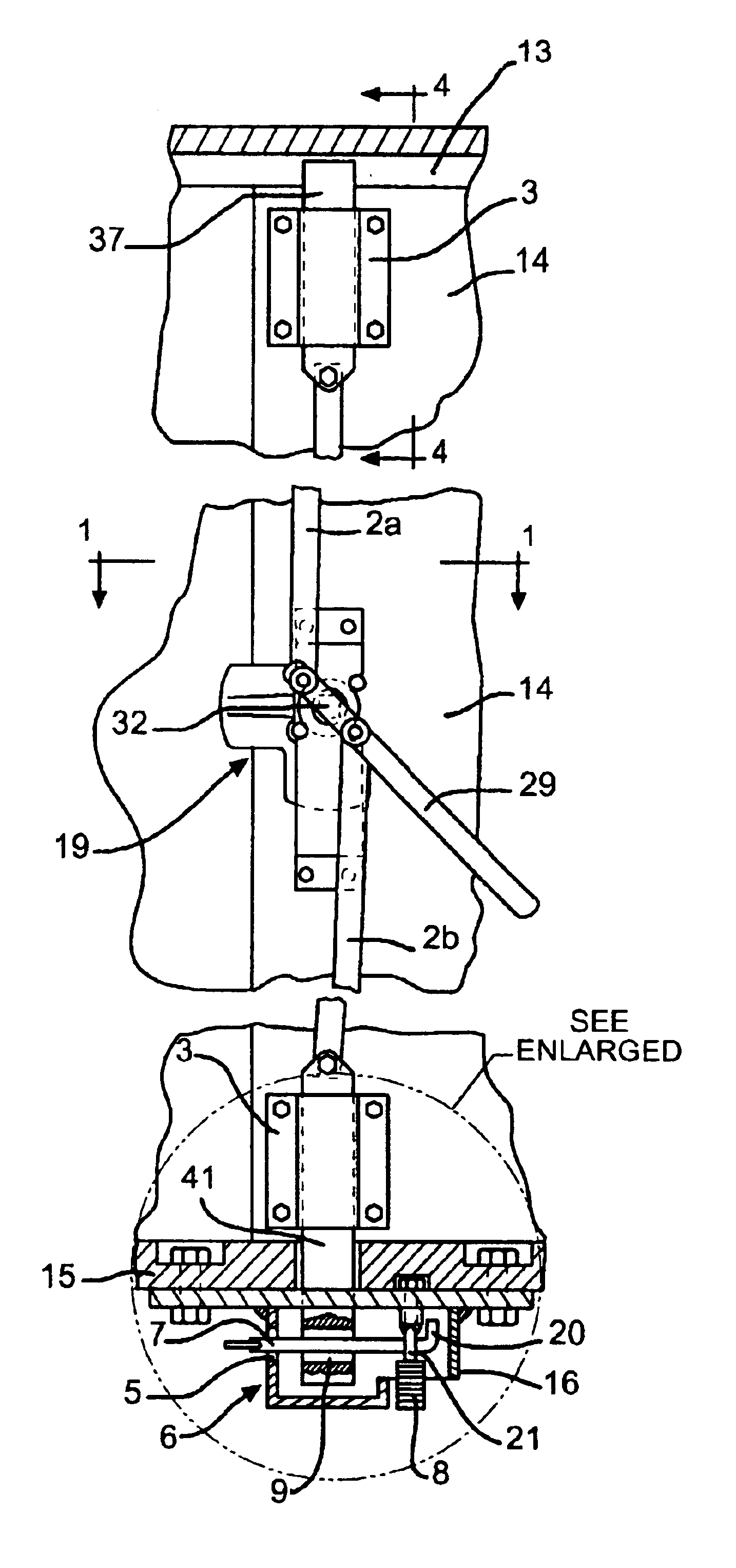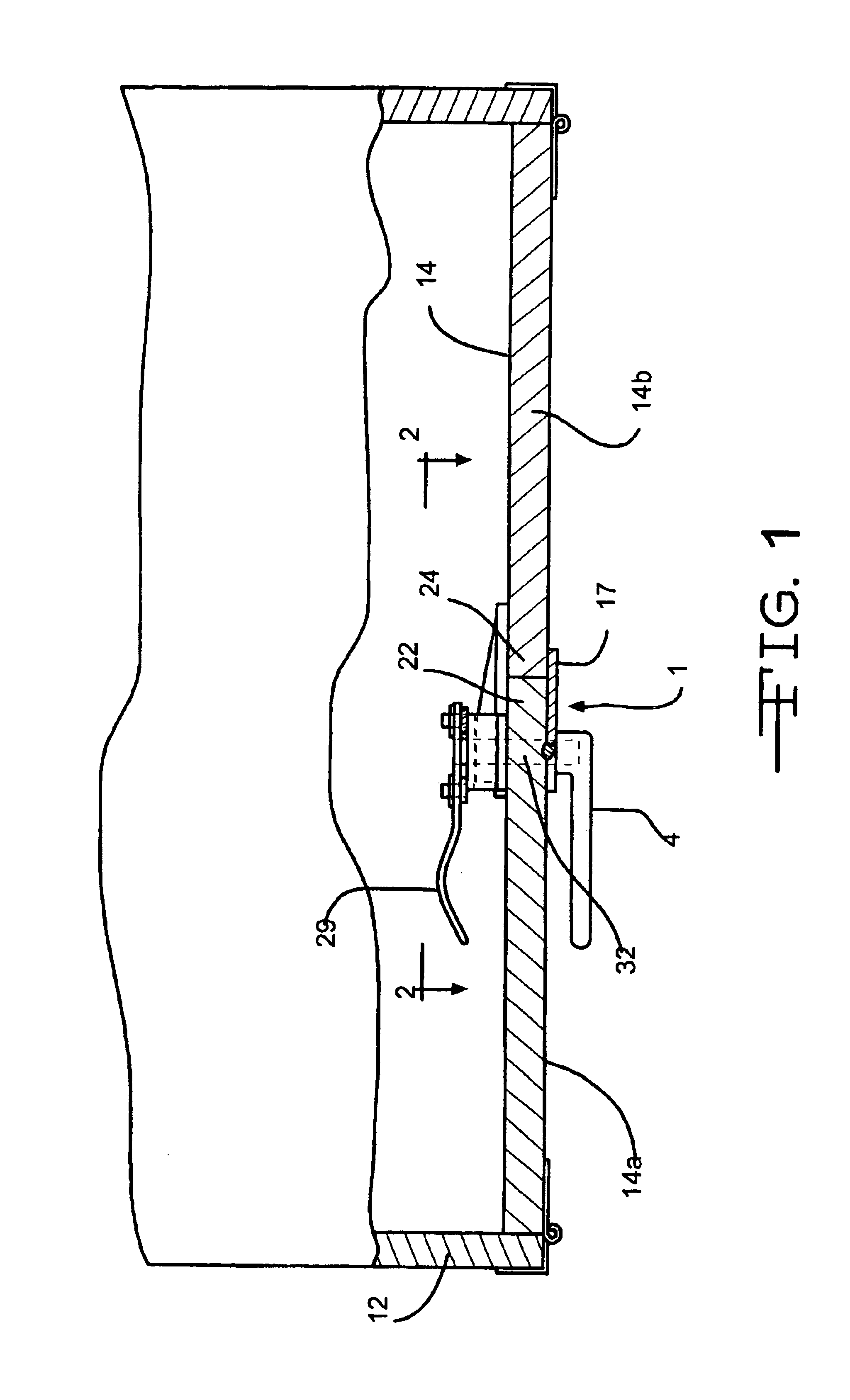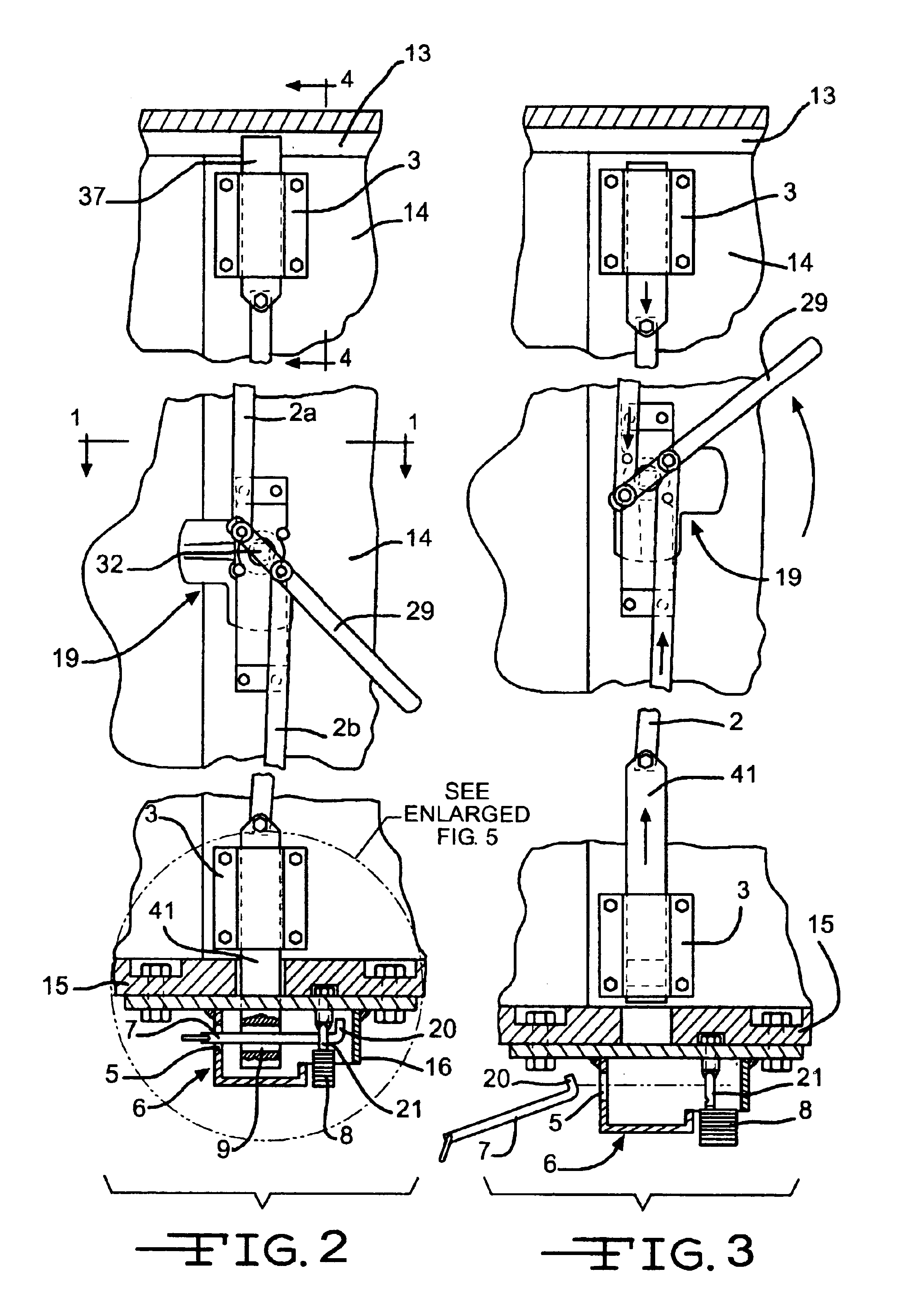Locking system for a door
a locking system and door technology, applied in the field of trailer security systems, can solve the problems of lack of effective security systems, easy for thieves to break into, and lock mechanisms, and achieve the effects of improving trailer security, simple, convenient and inexpensive, and improving safety
- Summary
- Abstract
- Description
- Claims
- Application Information
AI Technical Summary
Benefits of technology
Problems solved by technology
Method used
Image
Examples
Embodiment Construction
[0014]As seen in FIGS. 1-5 the invention is a trailer locking system 1 having a locking bar 2 which is secured and guided by two guides 3 which are installed in a horizontal orientation using bolts to the inside of the trailer door 14. The trailer door 14 has a first section 14a and a second section 14b that are pivotally mounted to one end of a trailer 12. The locking system 1 is positioned on the first section 14a of the trailer door 14. The first section 14a has a flange 17 that extends from the edge 22 of the first section 14a and is disposed to overlap the edge 24 of the second section 14b. The flange 17 is positioned so that it overlaps the second section 14b when the door 14 is in the closed position as shown in FIG. 1. With this arrangement, if the first section 14a is in a locked position, the flange 17 will overlap the second section 14b and prevent the second section from being opened.
[0015]The locking bar 2 has a first end 2a and a second end 2b that are connected to the...
PUM
 Login to View More
Login to View More Abstract
Description
Claims
Application Information
 Login to View More
Login to View More - R&D
- Intellectual Property
- Life Sciences
- Materials
- Tech Scout
- Unparalleled Data Quality
- Higher Quality Content
- 60% Fewer Hallucinations
Browse by: Latest US Patents, China's latest patents, Technical Efficacy Thesaurus, Application Domain, Technology Topic, Popular Technical Reports.
© 2025 PatSnap. All rights reserved.Legal|Privacy policy|Modern Slavery Act Transparency Statement|Sitemap|About US| Contact US: help@patsnap.com



